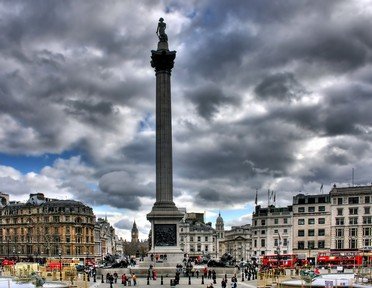Quiz Answer Key and Fun Facts
1. Richard "The Kingmaker" Neville was a hugely influential 15th century nobleman, who played a major part in placing King Edward IV on the throne in 1461 and in the restoration of King Henry VI in 1470. By what noble title is he best remembered?
2. The first hereditary peerage in England to be created for a woman was the Marquessate of Pembroke in 1532. To which prominent woman at the Tudor court, best known for being beheaded, was this title granted?
3. The Countess of Shrewsbury was one of the most famous, powerful and wealthy women of England's Elizabethan age. In addition to being a lady in waiting to Queen Elizabeth I and a close companion of Mary, Queen of Scots during 15 years of her imprisonment in England, she was also responsible for ordering the construction of several stately homes and putting together an amazing collection of Tudor textiles. By what name was this remarkable woman better known?
4. John Churchill, the 1st Duke of Marlborough, earned his dukedom following early battlefield successes in the War of the Spanish Succession. However, he gained most of his fame and fortune for which later battle, a decisive victory for England and its allies?
5. The Earl of Sandwich, John Montagu, famously gave his name to a meal consisting of two pieces of bread with some sort of filling between them. However, his name was also given to many newly discovered lands in the 18th century. By what name are the Sandwich Islands now known?
6. Georgiana Cavendish, Duchess of Devonshire was a noted socialite and an influential political campaigner at a time when women were still around 150 years away from obtaining the vote on equal terms with men. However, her political connections were also more personal - with which future Prime Minister did she have an affair that resulted in the birth of an illegitimate daughter?
7. Arthur Wellesley rose to fame and fortune as a result of his successful military career that reached its pinnacle when he defeated Napoleon's forces at the Battle of Waterloo in 1815. As a result he was granted which dukedom that shares its name with a town in the English county of Somerset?
8. Robert Gascoyne-Cecil, the last British Prime Minister to lead the government from the House of Lords, was the Marquess of which English cathedral city?
9. Louis Mountbatten was a member of the British royal family who held many important military and diplomatic roles including Governor-General of India, First Sea Lord and Supreme Allied Commander of the Southeast Asia Theatre during the Second World War. The last of these was the influence behind which title granted to him when he was elevated to the peerage in 1946?
10. Anthony Armstrong-Jones, a celebrated photographer whose work is included in the collection of the National Portrait Gallery, gained an earldom when he married Queen Elizabeth II's younger sister, Princess Margaret, in 1960. Although he was born in England, his title is named for which Welsh mountain?
Source: Author
Fifiona81
This quiz was reviewed by FunTrivia editor
bloomsby before going online.
Any errors found in FunTrivia content are routinely corrected through our feedback system.

